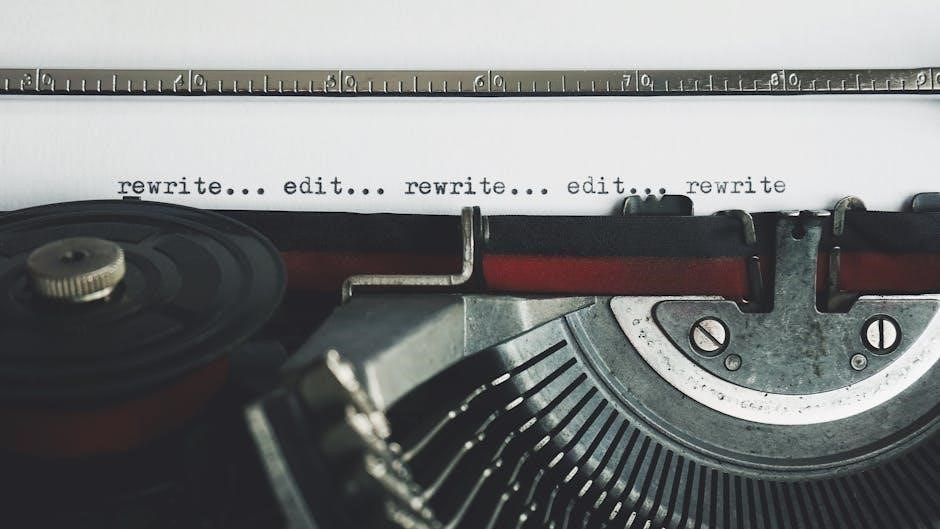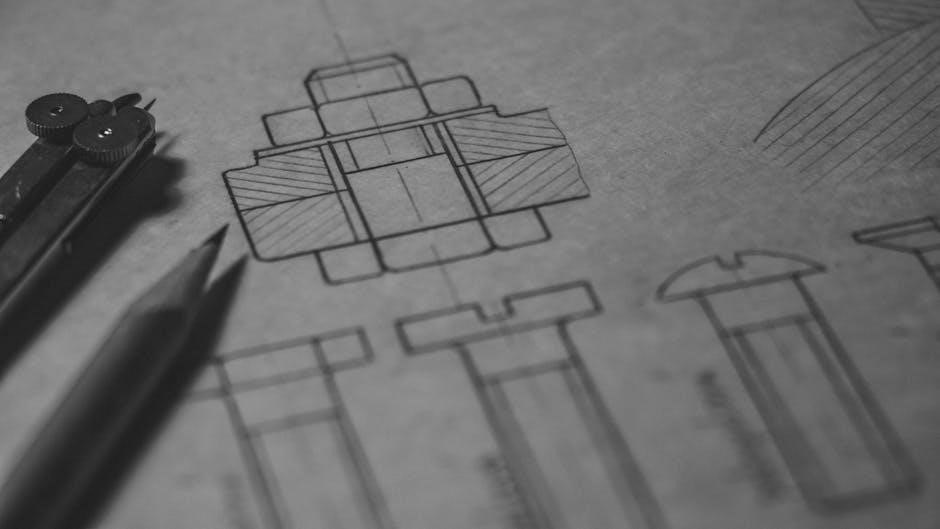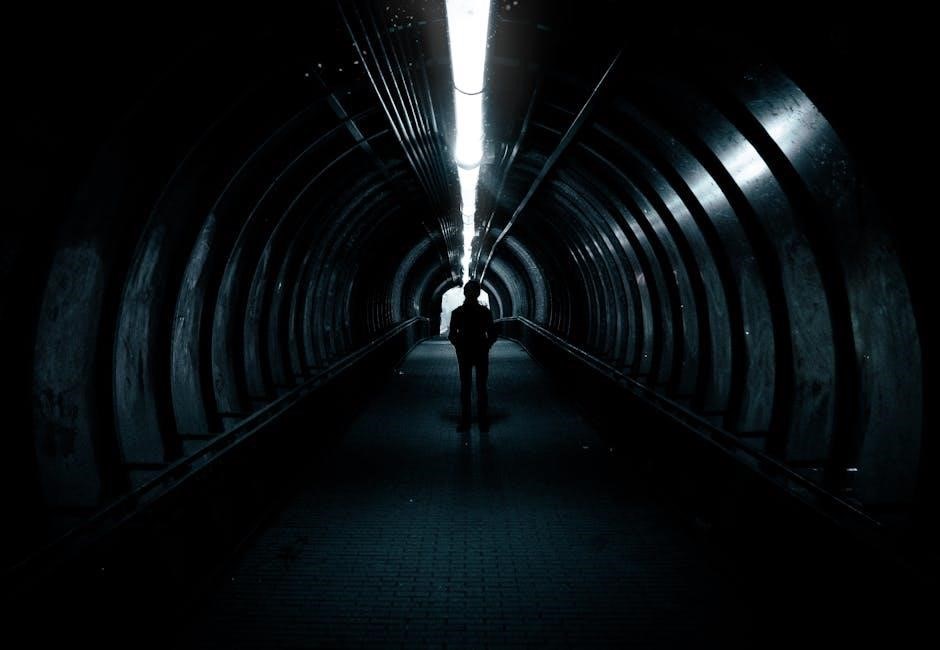Welcome to the comprehensive guide for drafting Modern Horizons 3 (MH3)! This guide aims to provide you with the knowledge and strategies needed to navigate the complexities of the MH3 draft environment․ With insights into key mechanics‚ archetype overviews‚ and valuable drafting tips‚ you’ll be well-equipped to succeed․
Modern Horizons 3 (MH3) brings a fresh and exciting draft experience to Magic: The Gathering‚ building upon the legacy of its predecessors with a unique blend of new mechanics and returning favorites․ This set is designed to offer a deep and complex Limited format‚ encouraging drafters to explore various strategies and synergies․
One of the key distinctions of MH3 is its debut on MTG Arena‚ making it more accessible to a wider audience․ The format emphasizes “Limited Constructed” decks‚ resembling the feel of constructed decks with well-defined game plans․ Whether you’re a seasoned drafter or new to the Modern Horizons series‚ understanding the nuances of MH3 is crucial for success․
The set features straightforward archetypes that require drafters to prioritize cards effectively within their chosen strategy․ With an abundance of modal double-faced cards (MDFCs) to boost manabases and powerful removal spells to control the board‚ MH3 offers plenty of opportunities for skillful play and strategic decision-making․ This guide will help you navigate these complexities and enhance your drafting prowess․
Key Mechanics and Strategies in MH3
Modern Horizons 3 introduces several key mechanics that significantly influence draft strategies․ One prominent aspect is the return of modal double-faced cards (MDFCs)‚ which offer flexibility in deck construction by serving as both lands and spells․ Valuing these cards highly is essential‚ as they artificially increase your land count without sacrificing spell access․
Another critical element is the presence of energy as a resource‚ particularly in the Azorius archetype‚ which encourages the reckless expenditure of energy for powerful effects․ Furthermore‚ affinity for artifacts plays a significant role‚ reducing the cost of large creatures and spells when synergizing with artifacts․
Colorless mana also plays a crucial role‚ with potent creatures like Breaker of Creation requiring it for deployment․ Drafting lands that generate colorless mana becomes vital when pursuing these strategies․ Overall‚ understanding these mechanics and their interactions is fundamental for crafting cohesive and effective draft decks in Modern Horizons 3․ Prioritizing cards that support these mechanics will greatly improve your chances of success in your drafts․
Archetype Overview: Identifying Synergies
Modern Horizons 3 boasts a diverse range of archetypes‚ each with its unique strengths and synergies․ Identifying these synergies early in the draft is crucial for building a cohesive and powerful deck․ For instance‚ the Selesnya archetype focuses on aggressive strategies‚ potentially going wide with 1/1 counters and using proliferate to grow multiple creatures simultaneously‚ or going tall by stacking Bestow auras on a single creature․
The Dimir archetype emphasizes card draw and control‚ aiming to outvalue opponents through card advantage․ Meanwhile‚ the Golgari archetype revolves around modified creatures‚ leveraging cards that grant bonuses to creatures with counters or auras․ Understanding the key cards and interactions within each archetype is essential for making informed drafting decisions․

Furthermore‚ recognizing when to pivot between archetypes based on available cards is a valuable skill; By prioritizing synergistic cards and staying flexible‚ drafters can maximize their chances of constructing a winning deck in Modern Horizons 3․ Recognizing the open lanes is key to a successful draft․
Azorius Energy Archetype
The Azorius (Blue/White) archetype in Modern Horizons 3 revolves around the strategic use of Energy counters․ This archetype often leans towards a more tempo-oriented playstyle‚ utilizing energy to power up abilities and gain an advantage over opponents․
Key cards in this archetype often involve generating energy through creatures or spells‚ and then using that energy to activate powerful effects‚ such as drawing cards‚ creating tokens‚ or disrupting the opponent’s board․ Electrozoa is a key card‚ as is Aerie Auxiliary․ Look for opportunities to draft cards that efficiently generate and utilize energy․
The Azorius Energy archetype can be quite versatile‚ allowing for both aggressive and controlling strategies․ By carefully managing your energy resources and prioritizing synergistic cards‚ you can create a formidable deck that can adapt to various game states․ Tempo removal is key for this archetype‚ as is evasion․
Remember that the reckless expenditure of Energy is the name of the game!
Selesnya Aggro Archetype
The Selesnya (Green/White) archetype in Modern Horizons 3 focuses on aggressive strategies‚ aiming to overwhelm opponents with a swarm of creatures and efficient combat tricks․ This archetype emphasizes going wide with 1/1 counters and using proliferate to grow many creatures simultaneously․ Alternatively‚ it can involve going tall by stacking Bestow auras to make an overwhelming creature․
Key cards in this archetype often involve generating tokens‚ buffing creatures‚ and providing evasion․ Look for opportunities to draft cards that synergize well with a go-wide strategy‚ such as creatures that benefit from having multiple creatures on the battlefield or spells that provide a significant boost to your attacking force․
The Selesnya Aggro archetype requires a proactive approach‚ constantly applying pressure to the opponent and forcing them to make unfavorable trades․ Prioritize drafting a low mana curve to ensure you can consistently deploy threats in the early game․ Combat tricks and removal spells are also essential for pushing through damage and protecting your creatures․
Remember that the key to success with this archetype is to maintain a relentless assault‚ overwhelming your opponent before they can stabilize․
Dimir Draw Archetype

The Dimir (Blue/Black) archetype in Modern Horizons 3 revolves around controlling the game through card draw and disruption․ This strategy focuses on generating card advantage to outpace opponents and eventually overwhelm them with superior resources․ The core idea is to assemble a deck that can consistently draw extra cards‚ enabling you to find answers to threats and deploy your own powerful spells․
Key cards in this archetype often involve drawing cards‚ discarding opponents’ cards‚ and controlling the board with counterspells and removal․ Look for opportunities to draft cards that synergize well with a card-advantage strategy‚ such as spells that provide extra draw or creatures that generate value when they enter the battlefield․
The Dimir Draw archetype requires a patient approach‚ carefully managing your resources and disrupting your opponent’s plans․ Prioritize drafting a balance of card draw‚ removal‚ and defensive creatures to ensure you can survive the early game and transition into a dominant late game․ Counterspells and hand disruption are crucial for controlling the flow of the game and preventing your opponent from executing their strategy․
Remember that the key to success with this archetype is to maintain card advantage‚ control the board‚ and eventually overwhelm your opponent with superior resources․
Golgari Modified Archetype
The Golgari (Black/Green) archetype in Modern Horizons 3 thrives on the “Modified” mechanic‚ which focuses on creatures equipped with Auras or Equipment‚ or those with counters on them․ This strategy rewards players for enhancing their creatures‚ creating powerful threats that can dominate the board․ The core idea is to build a deck that consistently modifies its creatures‚ triggering beneficial effects and overwhelming opponents with enhanced attackers and defenders․
Key cards in this archetype often involve Auras and Equipment that provide stat boosts or abilities‚ as well as creatures that benefit from being modified․ Look for opportunities to draft cards that synergize well with the “Modified” theme‚ such as creatures that get +1/+1 counters when equipped or Auras that grant additional abilities․
The Golgari Modified archetype requires a proactive approach‚ aggressively modifying your creatures to gain an advantage․ Prioritize drafting a balance of creatures‚ Auras‚ and Equipment to ensure you can consistently enhance your board presence․ Removal spells are also important for clearing the way for your modified creatures to attack․
Remember that the key to success with this archetype is to aggressively modify your creatures‚ overwhelm your opponents with enhanced threats‚ and leverage the synergies between your modified creatures and supporting spells․
Artifact Affinity Strategies
The Artifact Affinity archetype in Modern Horizons 3 revolves around reducing the cost of spells and creatures by leveraging the number of artifacts you control․ This strategy allows for explosive turns‚ deploying multiple threats and overwhelming your opponent with sheer artifact presence․ Black and Red are primary colors․
A key aspect of this archetype is identifying and drafting cheap‚ efficient artifacts․ These artifacts serve as the foundation for reducing the cost of your Affinity spells․ Look for artifacts with low mana costs that provide utility‚ such as mana fixing or card draw‚ to maximize your Affinity potential․
Card draw is crucial for maintaining momentum in the Artifact Affinity archetype․ Artifacts that provide card draw or card selection can help you find the necessary pieces to continue playing multiple spells each turn‚ further accelerating your game plan․

Tempo removal spells‚ such as bounce effects or temporary exile effects‚ can disrupt your opponent’s plans and allow you to push through damage․ Prioritize drafting removal spells that efficiently clear the way for your artifact-fueled assaults․
Remember that successful Artifact Affinity decks require a careful balance of cheap artifacts‚ Affinity payoffs‚ card draw‚ and removal․ By prioritizing these elements‚ you can construct a powerful and explosive deck that dominates the board with artifact synergies․
Colorless Mana Considerations and Drafting
Colorless mana plays a significant role in Modern Horizons 3‚ primarily due to the presence of powerful Eldrazi creatures and other spells that require it․ Drafting with colorless mana in mind is crucial for maximizing the potential of these cards․ Evaluating the need for colorless mana sources early in the draft can significantly impact your deck’s overall strategy․
Prioritizing lands that produce colorless mana is essential if you plan to include cards like Breaker of Creation in your deck․ These lands often come with a drawback‚ such as entering the battlefield tapped‚ so it’s important to strike a balance between fixing and tempo․
Some creatures or artifacts can also generate colorless mana‚ providing additional sources to fuel your spells․ These can be especially valuable in decks that heavily rely on colorless mana but need flexible mana fixing․
When drafting‚ be mindful of the opportunity cost of including colorless mana sources․ Weigh the benefits of enabling powerful colorless spells against the potential drawbacks of slower mana development․
Consider drafting lands that offer both colored and colorless mana options to provide flexibility in your mana base․ Modal dual-faced cards (MDFCs) can be particularly valuable in this regard‚ as they allow you to choose the appropriate land type based on your current needs․
Removal Spell Analysis in MH3 Limited
Removal spells are crucial in any Limited format‚ and Modern Horizons 3 is no exception․ Understanding the types of removal available‚ their strengths‚ and their weaknesses is essential for drafting a successful deck․ Analyzing removal spells involves considering their mana cost‚ targets‚ and any additional effects they may have․
Efficient removal spells‚ such as those that cost one or two mana‚ are highly valuable as they allow you to answer early threats and maintain tempo․ However‚ these spells often have limitations‚ such as targeting only creatures with certain characteristics․
More expensive removal spells typically offer broader coverage‚ capable of dealing with larger threats or even planeswalkers․ However‚ these spells can be slow and may not be ideal in aggressive matchups․
Some removal spells provide additional value‚ such as card draw or graveyard interaction․ These spells can be particularly strong as they offer both removal and card advantage․
When drafting‚ prioritize removal spells that align with your deck’s strategy․ Aggressive decks often benefit from efficient removal‚ while control decks may prefer more versatile options․
Be aware of the common threats in the format and draft removal spells that can effectively answer them․ Consider the prevalence of creatures with evasion or protection abilities when evaluating removal options․
Importance of Modal Double-Faced Cards (MDFCs)
Modal Double-Faced Cards (MDFCs) are a significant component of Modern Horizons 3‚ offering flexibility and strategic depth to your drafts․ These cards present a choice between two different faces‚ allowing you to adapt to various game situations and deck needs․
The primary advantage of MDFCs is their ability to provide both lands and spells in a single card slot․ This is particularly valuable in Limited‚ where balancing mana consistency with card quality is crucial․ MDFCs help mitigate mana screw while ensuring access to relevant spells․
When drafting‚ prioritize MDFCs that offer useful options on both faces․ Lands that enter the battlefield untapped are especially desirable‚ as they provide immediate mana fixing without hindering your tempo․
Spells on MDFCs should be evaluated based on their impact and synergy with your deck․ Removal spells‚ card draw‚ and impactful threats are all strong options to consider․
MDFCs also enable you to play a lower land count in your deck without sacrificing consistency․ This can free up slots for more impactful spells‚ increasing your overall card quality․
Be mindful of the color requirements of both faces when drafting MDFCs․ Prioritize cards that align with your deck’s color identity to maximize their utility․
Drafting Lands and Mana Base Construction
Constructing a solid mana base is crucial for success in any Magic: The Gathering draft format‚ and Modern Horizons 3 is no exception․ A well-balanced mana base ensures you can consistently cast your spells on time‚ regardless of color requirements․
When drafting lands‚ prioritize those that fix your mana effectively․ Dual lands‚ such as those found in MH3‚ are invaluable for enabling multi-color strategies․ These lands allow you to play cards from different colors without sacrificing consistency․
Modal Double-Faced Cards (MDFCs) that transform into lands are also highly desirable; They provide flexibility‚ allowing you to use them as either a land or a spell depending on your needs․
Consider drafting lands that produce colorless mana if your deck includes colorless-mana-intensive cards․ These lands can enable powerful plays with Eldrazi creatures and other colorless spells․
Aim for a land count of around 17-18 in a typical 40-card draft deck․ Adjust this number based on your deck’s mana curve and the number of mana-fixing lands you have․
Prioritize lands early in the draft‚ especially if you plan to play a multi-color deck․ Consistent mana is essential for executing your game plan effectively․

Tips for Success in MH3 Draft
To maximize your chances of success in Modern Horizons 3 draft‚ consider these tips․ First‚ understand the archetypes․ Familiarize yourself with the key strategies for each color combination․ Knowing the synergies will help you identify valuable cards during the draft․
Second‚ prioritize removal spells․ Removal is crucial for dealing with your opponent’s threats․ Evaluate removal spells based on their efficiency and versatility․
Third‚ pay attention to the mana curve․ A well-balanced mana curve ensures you have plays at every stage of the game․ Avoid drafting too many high-cost cards․
Fourth‚ draft lands strategically․ Mana fixing is essential for multi-color decks․ Prioritize dual lands and MDFCs that can be played as lands․
Fifth‚ be flexible․ Don’t be afraid to switch archetypes if the signals aren’t there․ Adapt your strategy based on the cards you’re seeing․
Sixth‚ evaluate cards in context․ A card’s value depends on the archetype you’re drafting․ Some cards are more powerful in specific strategies․
Finally‚ practice makes perfect․ The more you draft MH3‚ the better you’ll become at evaluating cards and building successful decks․ Use online simulators․
